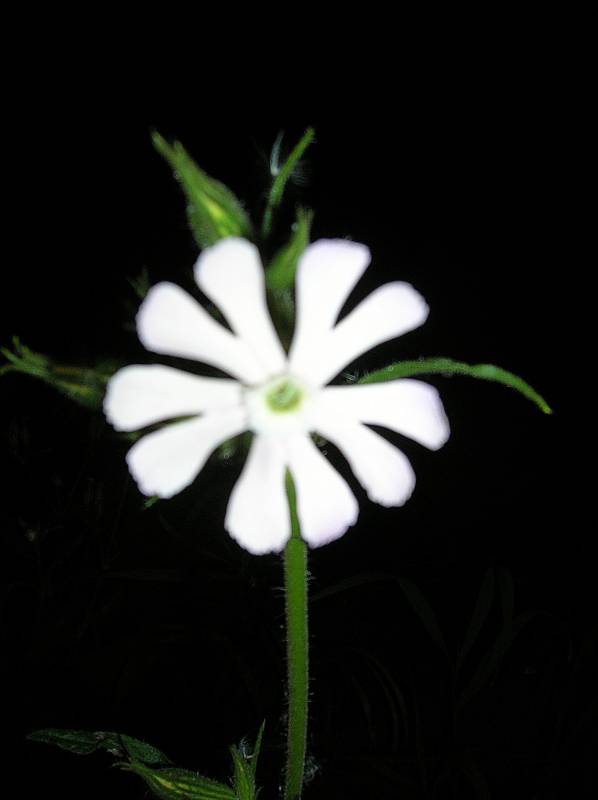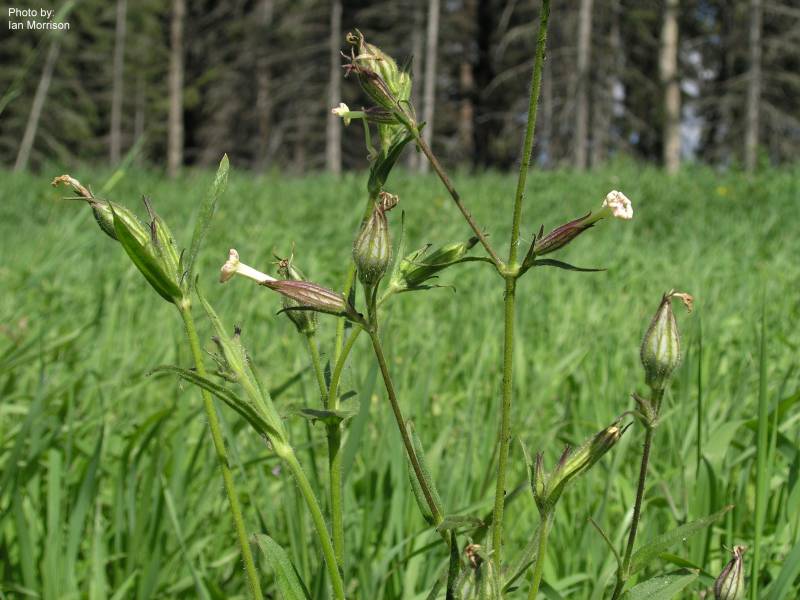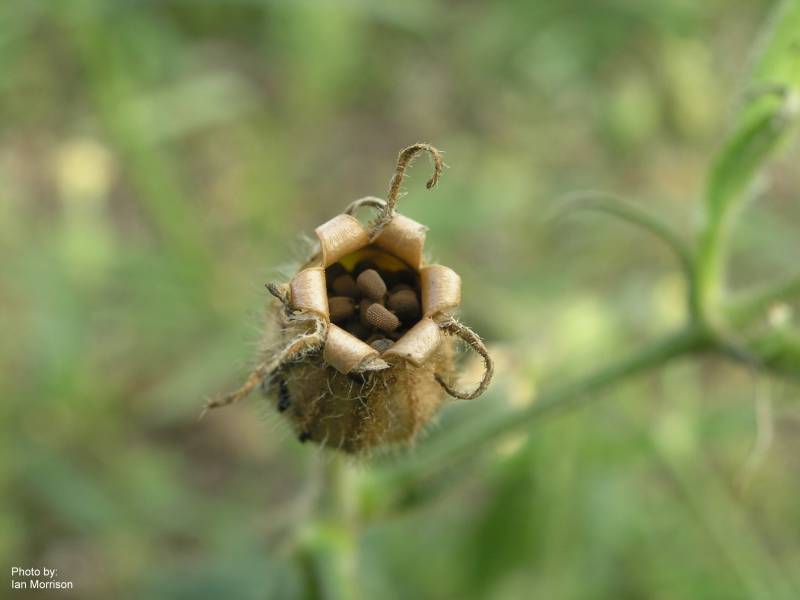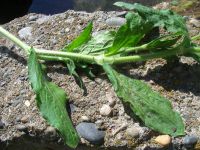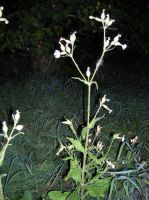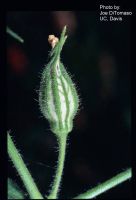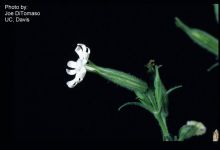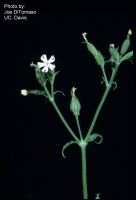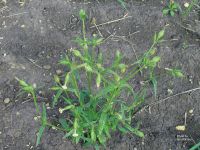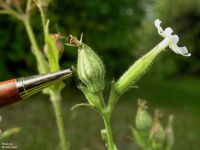Distribution: Occurring on both sides of the Cascades crest in Washington; Yukon Territory to California, east across North America to the Atlantic Coast.
Habitat: Grain fields and waste areas.
Flowers: June-August
Origin: Introduced from Europe
Growth Duration: Annual
Conservation Status: Not of concern
Pollination: Self-pollination, moths, hummingbirds
Annual with 1-3 simple or branched stems, 2-6 dm. tall, stiff-hairy throughout and glandular-pubescent above.
Leaves opposite, ovate-lanceolate to elliptic-oblanceolate, 5-12 cm. long and up to 4 cm. broad, the lower ones long-petiolate, the upper sub-sessile.
Flowers few to several in an open inflorescence, the pedicels 3-30 mm. long; calyx 5-lobed, tubular, 15 mm. long at flowering, much enlarged in fruit, 10-nerved, the lobes lance-linear, 5-9 mm. long; petals 5, white to pinkish, glabrous, the claw 12-25 mm. long, auriculate above, the blade 7-10 mm. long, bi-lobed less than half the length; blade appendages 2, 0.5-1.5 mm. long and broad; stamens 10; styles 3. Flowers open at dusk.
Capsule 3-celled.
Publication: Sp. Pl. 1: 419. 1753.
PNW Herbaria: Specimen records of Silene noctiflora in the Consortium of Pacific Northwest Herbaria database
WA Flora Checklist: Silene noctiflora checklist entry
OregonFlora: Silene noctiflora information
E-Flora BC: Silene noctiflora atlas page
CalPhotos: Silene noctiflora photos

